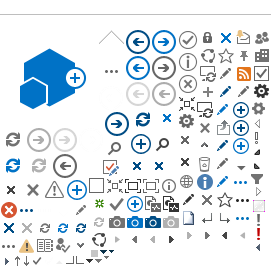Name of Group | 1.06 Delta-DOR Working Group |
Area | Systems Engineering Area (SEA) |
Chairperson | Javier de Vicente |
Chairperson E-Mail Address | javier.devicente@esa.int |
Chairperson Agency | ESA |
Deputy Chairperson | Christopher Volk |
Deputy Chairperson E-Mail Address | christopher.p.volk@jpl.nasa.gov |
Deputy Chairperson Agency | NASA |
Mailing List | sea-d-dor@mailman.ccsds.org |
Scope of Activity | The scope of the proposed Delta-DOR WG is to clearly define the steps and procedures for the interoperability and cross-support among the Agencies for Delta-DOR observations. More in detail, the aim of the WG is to produce:
- A Magenta Book (Delta-DOR operations) with the standard recommended practice to be used for interoperability and cross-support among different Agencies
- A Magenta Book (Quasar catalogue) addressing the recommended practice for the development/update of a Quasar Catalogue
- A Green Book containing the principles, the technical descriptions and the achievable performance of the Delta-DOR technique plus explanations supporting Magenta Book
- A Blue Book (Raw Data Exchange Format - RDEF) describing the interface for raw Delta-DOR data exchange format
- A Magenta Book (Architectural Guidelines) providing guidelines on spacecraft and ground station technical options to meet Delta-DOR target performance
- A Blue Book (DOR signal structure) providing specifications on spacecraft signal structure for improved Delta-DOR performance (with RF&Mod)
The Working Group is also responsible of updating/maintaining such books when necessary
|
Rationale for Activity | During the last years Delta-DOR (Delta Differential One-Way Ranging) support has become a point of interest for many space Agencies due to its intrinsic reliability and robustness as a technique capable to provide precise navigation data and to be used as an independent mean to validate orbit solutions or for fast orbit determination recovery in case of unexpected events prior or after spacecraft manoeuvres.
Being an interferometric technique, it needs two stations (forming a baseline) for contemporary tracking of a deep-space probe and of an angularly nearby quasar. The way the measurement is performed offers a great opportunity for interoperability among Agencies using Delta-DOR for navigating their probes.
The proposed standardization has the aim to reduce operational costs while improving deep space navigation capabilities by increasing the number of intercontinental baselines able to perform jointly Delta-DOR measurements.
|
Goals | There are three parts to providing Delta-DOR services, the first being the definition of the RF domain signals and reception (allocated to CCSDS SLS), the second being the definition of the data products (allocated to CCSDS MOIMS), and the third being the definition of the method for requesting service and transferring data products (to be developed under CCSDS CSS).
The main output of the WG will be the following books.
The Recommended Practice (Magenta Book) on “Delta-DOR operations Operations“ (COMPLETED, to be updated) addresses aspects of the technique that require standardization in order to enable Delta-DOR interoperability among space agencies, e.g.:
- the end-to-end process
- the specific cross-support interfaces
- the parameters needed to implement the defined end-to-end process
- the ground station and spacecraft configuration aspects
- the way agencies will exchange data and the format of such data
- the validation process and qualitative assessment of the Delta-DOR interoperability
- the identification and parameterisation of the standards to be applied to the end-to-end process
The Delta-DOR operations Magenta Book shall undergo a 3-years review in order to address aspects related in particular to:In its revision it also addresses
- the quantitative criterion for the achieved performance level
- the update of the service request needed to enable the Delta-DOR cross-support
The Recommended Practice (Magenta Book) on “Delta-DOR Quasar Catalogue” development addresses:
- the process for establishing, validating, maintaining and updating of a Quasar catalogue enabling Delta-DOR operations.
- SANA operational guidelines
The Green Book on Technical Characteristics and Performance (COMPLETED, to be updated) contains all the descriptive material which is needed, in order to introduce the technique, such as:
- the theoretical background
- the rationales and the trade-offs which led to current and envisaged implementations with particular focus on the signal structure
- the achievable performance
- the overview of the process
The revision of the GB will provide materials that could evolve into a new Magenta Book for the recommendations on architectures and into a new Blue Book for the specific signal structures to be employed (to be issued with the RF&Mod WG). This is still under discussion.
The Proposed Blue Book “Raw Data Exchange Format (RDEF)”(COMPLETED) covers the interface for raw Delta-DOR data exchange
The Magenta Book “Architectural Guidelines” on spacecraft and ground station to meet Delta-DOR target performance addresses the following:
- signal structure of on-board transponder
- ground station receiver and recorder characteristics
- provision for media calibration
The Blue Book “DOR signal structure” provides specifications on spacecraft signal structure for improved Delta-DOR performance.
The development of Delta-DOR interoperability among Agencies would be greatly beneficial for all planned or future Science and Solar System Exploration space missions.
Other topics to be discussed by the WG are:
- techniques to enhance accuracy
- liason with other WGs belonging to the SLS, MOIMS and CSS areas, in order to harmonise the end-to-end system.
|
Survey of Similar Standards Efforts Undertaken in
Other Bodies and elsewhere in CCSDS | Delta-DOR is a specialised activity.
No other WG or other entities outside CCSDS are undertaking any work on Delta-DOR specific matters. |
Patent Licensing Applicability for Future Standards | N/A |
Technical Risk Mitigation Strategy | Delta-DOR technique for interplanetary navigation is a stable and very well-defined technique; therefore no specific risks can be identified.
|
Management Risk Mitigation Strategy | Unless adequate manpower is allocated, by reviewing Agencies, delays in the documents issues, comments and reviews may defer the finalisation of both the proposed outputs. |


